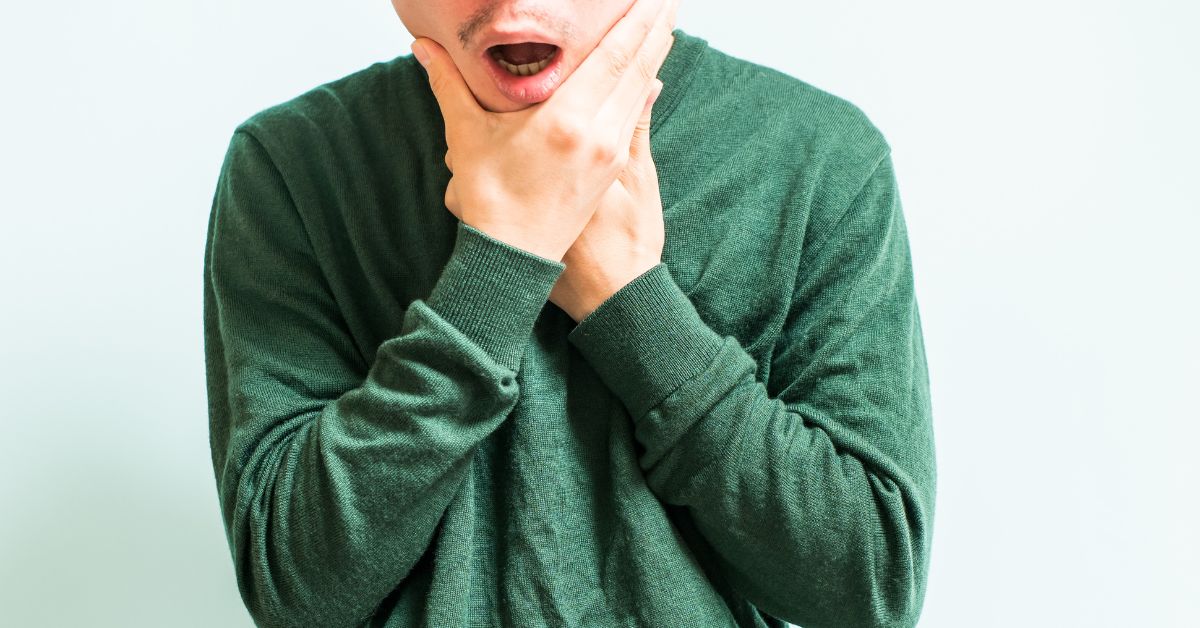Temporomandibular Joints (TMJ Disorder): Causes, Symptoms &Treatment


The temporomandibular joint (TMJ) is a sliding hinge joint present on each side of the jaw. It connects the mandible(lower jaw bone) to the skull.
What do we need to know about TMJ disorders?
TMJ helps in opening and closing your mouth, enabling you to eat and speak. TMJ disorders are conditions, which affect the TMJ joint and its muscles. TMJ disorders cause severe pain, loss of mobility, and tenderness in the joints and associated muscles.
What are the symptoms associated with TMJ disorders?
Symptoms of TMJ disorders include:
- Tenderness and pain in the TMJ joints
- Pain in the mandible
- Aching pain around or in the ear
- Facial pain
- Difficulty in chewing
- Locking of TMJ joint
- Unable to open or close the mouth.
When to see a doctor
Consult a doctor if you are experiencing constant pain in the jaw and find it difficult to open or close your jaw.
Request an appointment at Apollo Hospitals
What causes TMJ disorders?
The bones associated with the temporomandibular joints are covered with cartilage. These bones are separated by a shock-absorbing disk that helps in the smooth movement of the jaw. TMJ disorders can occur because of multiple reasons, such as:
- Displacement of the shock-absorbing disk from its correct position.
- Damage of joint cartilage because of injury or arthritis.
What are the risk factors associated with TMJ disorders?
Factors that can increase the risk of TMJ disorders are:
- Arthritis
- Jaw injury
- Genetic problems
- Bruxism
- Problems related to connective tissues
What are the treatment options for TMJ disorders?
TMJ disorders do not always require treatment, sometimes symptoms vanish on their own, but if they persist, you need treatment. Treatment includes:
Medications: Pain relievers, anti-inflammatory drugs, tricyclic antidepressants and muscle relaxants are prescribed.
Non Drug therapies:
- Oral splints or mouth guards: these are soft and firm devices placed over the teeth to provide relief from jaw pain
- Physical therapy: it includes stretching and exercises to strengthen jaw muscles and moist heat and ice therapy
Surgical procedures:
- Arthrocentesis: it’s a minimally invasive procedure that involves inserting needles inside the joints to irrigate the fluid present in the joint to reduce inflammatory byproducts and other debris.
- Injections: corticosteroid or botox injections are given to relieve pain in case of severe cases.
- TMJ arthroscopy: A small thin tube (cannula) is placed into the joint space, an arthroscope is inserted and tiny surgical instruments are used to perform the surgery. TMJ arthroscopy has very few risks and complications compared to open-joint surgery, but it also has some limitations.
- Modified condylotomy: In modified condylotomy, TMJ is addressed indirectly, with surgery performed on the mandible and not in the joint itself. It may be helpful for treatment of pain and if locking is experienced.
- Open-joint surgery or arthrotomy: It is performed when no other treatment options worked. Moreover, it is performed when there is a structural deformity. Open surgery is done to either repair the joint or to replace the joint.
Request an appointment at Apollo Hospitals
Conclusion
TMJ disorders are easily curable and treatable medical conditions. Sometimes, you don’t even need treatment as symptoms go away on your own.
Frequently Asked Questions (FAQs)
How are TMJ disorders diagnosed?
Doctors or dentists usually perform a physical examination of your jawbone and its range of mobility. If required, a dental X-ray or CT scan is done to examine for any damage to the jaw and nearby regions. MRI can be done to check the functioning of the disc and surrounding tissues. TMJ arthroscopy can also be used for diagnosis as well as treatment .
How can this be prevented?
Certain lifestyle changes and awareness can prevent TMJ disorders, such as:
- You need to be more aware of tension-related habits- grinding and clenching of your jaw.
- Do not overuse your jaw muscles.
- Eat soft and light food.
What are the home remedies that can ease the condition?
- Avoid chewing for too long.
- Do exercise and stretching to relax your jaw muscles.
- Apply heat and cold therapy.
© Copyright 2024. Apollo Hospitals Group. All Rights Reserved.
 +91 8069991061
Book Health Check-up
+91 8069991061
Book Health Check-up







